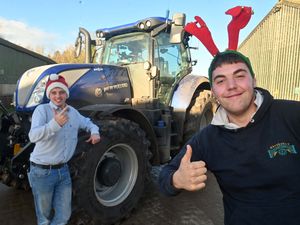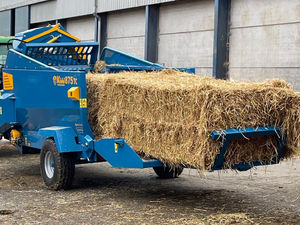Milk recording is a vital tool in managing herds
The Cattle Information Service helps farmers delve deep into their herd milk production to make informed analysis that will affect the business’ profitability and bottom line.
If you don’t measure, record, and make observations, then how can you really get to the depths of what’s going on in your herd? Can you be confident in saying which cows negatively, or positively affect milk production if you don’t milk record?
Here are our five top reasons why you should milk record.
1. To increase the profitability of your herd, that is, increase fats, proteins, lower cell counts
2. Improve on calving interval
3. Track herd health - monitor disease prevalence and identify fertility areas of concern
4. Change calving pattern
5. It’s a complete management tool to benchmark your herd. The farmer, herdsman, vet, analysts and consultants can all have access to the same information to make informed decisions
Milk recording is a vital tool on dairy farms to assist a farm to run efficiently and cost effectively. It ensures the farmer is aware of the profitability and health of each individual cow through measurement of milk, fat, protein, urea, ketosis, acidosis and cell count.
Motivation for milk recording varies greatly from farm to farm, ranging from the desire for genetic improvement in pedigree herds to the need for more detailed management information, which can be crucial in all commercial dairy herds of today.
With any business, the saying is, ‘you can’t manage what you don’t measure’- this being very true with herd performance. Milk recording provides important information to look at the herd as a whole, but more importantly, each cow within the herd, providing data that identifies whether the animal is making a positive or negative difference to business performance.
Knowlesmere Holsteins, run by the Whittaker family at Redcastle near Shrewsbury, have been milk recording for over 30 years and say that it’s a multi-functional tool to aid efficiency and with recent technology advancement, it has opened many new areas on health tracking.
Andrew and Jane Whittaker of Knowlesmere Holsteins say; “We need the everyday information of fats and proteins along with cell counts, to keep our feed costs in check! Management reports are also very important and we use them more and more.
"We check milk statements, young stock reports daily and have recently downloaded the classification record for the herd for the first time for our visit from the classifier. This is the fun element to our business; understanding genetic improvement moving forwards and how our cow families are developing to keep our pedigree families current and up to date.”
They add; “There is a vast amount of data and information on the CIS website that helps all areas of our business to improve calving intervals and identify areas of concern. The medical record is also now so important with the need to reduce our antibiotic use every year. Our Milk Recorder, Bev, is a vital part of the process - she visits us once a month and efficiently inputs correct information and is definitely a valuable part of the Knowlesmere team.”
The Cattle Information Service offers a range of services providing data to make informed decisions about current and future herd performance, operating a state of the art accredited laboratory in Telford, Shropshire. www.thecis.co.uk
Bernadette Crayston, CIS Area Manager for Shropshire, Midlands.





